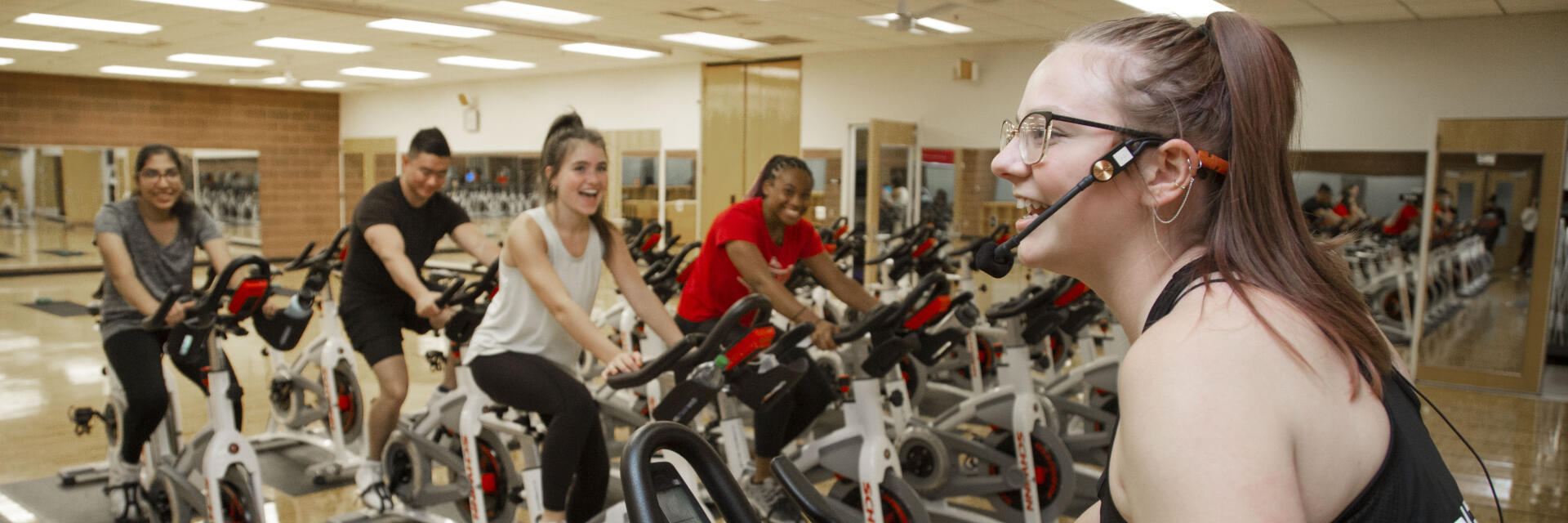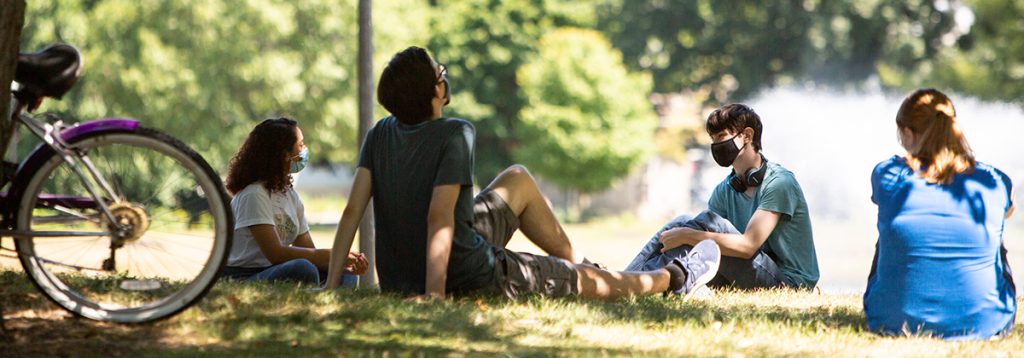This guide explores practical, evidence-based strategies for promoting student wellness both in the classroom and beyond. By implementing these approaches, educators can create environments where students not only achieve academically but develop the well-being skills and resilience necessary for lifelong success.
Understanding the Dimensions of Student Wellness
Physical Wellness: The Foundation for Learning

Physical wellness forms the biological foundation upon which all other aspects of wellness and learning depend. Key components include:
Movement and Physical Activity
- Brain-based learning connection: Physical activity increases blood flow to the brain, improves cognitive function, and enhances focus and attention.
- Daily movement opportunities: Beyond formal physical education, students benefit from movement breaks, active transitions, standing desks, and active learning approaches.
- Physical literacy development: Building fundamental movement skills and confidence contributes to lifelong physical activity habits.
Nutrition and Hydration
- Cognitive impacts: Proper nutrition directly affects brain development, mood regulation, and learning capacity.
- Food security considerations: Many students face challenges accessing adequate nutrition, affecting their readiness to learn.
- Healthy eating education: Teaching nutrition basics helps students develop lifetime wellness habits.
- Hydration importance: Even mild dehydration can impair cognitive function and concentration.
Sleep Hygiene
- Learning connection: Adequate sleep is essential for memory consolidation, emotional regulation, and cognitive processing.
- Age-appropriate needs: Elementary students typically need 9-12 hours, while adolescents require 8-10 hours of quality sleep.
- School impacts: Sleep deficiency affects attention, behavior, learning capacity, and emotional regulation.
Mental and Emotional Wellness: Cultivating Inner Resources
Mental and emotional wellness encompasses psychological well-being, stress management, and emotional intelligence:
Stress Management and Resilience
- Stress response education: Teaching students to recognize and manage their stress responses provides essential life skills.
- Resilience building: Developing the capacity to navigate challenges, bounce back from setbacks, and adapt to change.
- Mindfulness practices: Evidence-based approaches that enhance focus, reduce stress, and improve emotional regulation.
Mental Health Literacy
- Recognizing warning signs: Age-appropriate education about mental health challenges and when to seek help.
- Destigmatizing mental health: Creating cultures where mental health is discussed openly and without judgment.
- Protective factors: Building strengths, coping strategies, and support networks that buffer against mental health challenges.
Emotional Intelligence
- Self-awareness: Recognizing one’s emotions, thoughts, and values and how they influence behavior.
- Self-regulation: Managing emotions and behaviors in different situations.
- Empathy development: Understanding the perspectives and feelings of others.
- Healthy expression: Developing appropriate ways to express and process emotions.
Social Wellness: Building Connections and Community
Social wellness focuses on developing healthy relationships and a sense of belonging:
Relationship Skills
- Communication: Effective expression, active listening, and clear articulation of needs and boundaries.
- Conflict resolution: Strategies for addressing disagreements constructively and repairing relationships.
- Collaboration: Working effectively with others toward common goals.
- Digital citizenship: Navigating online interactions responsibly and healthily.
Belonging and Inclusion
- Identity development: Supporting students in developing positive self-concept and cultural identity.
- Inclusive practices: Creating environments where diversity is valued and all students feel welcome.
- Community building: Fostering connections between students across differences.
- Preventing isolation: Identifying and supporting students who may be socially disconnected.
Social Support Networks
- Peer relationships: Facilitating positive peer interactions and friendships.
- Mentor connections: Providing access to caring adults beyond classroom teachers.
- Community engagement: Connecting students with broader community supports and opportunities.
Classroom Strategies: Integrating Wellness Daily
The classroom environment offers countless opportunities to promote wellness through both explicit instruction and environmental factors:
Creating Physical Wellness-Promoting Classrooms
Movement Integration
- Brain breaks: Short 2-5 minute movement activities between learning tasks
- Active learning: Lessons designed to incorporate physical movement (e.g., gallery walks, four corners activities)
- Flexible seating: Options allowing students to stand, sit on stability balls, or change positions
- Outdoor learning: Utilizing outdoor spaces for instruction when possible
Nutrition Support
- Water access: Ensuring students can access water throughout the day
- Healthy celebration policies: Shifting from high-sugar treats to meaningful non-food rewards
- Snack policies: Guidelines for nutritious classroom snacks when applicable
- Teaching moments: Integrating nutrition education into relevant curriculum
Fostering Emotional Well-Being in Class
Emotional Safety Foundations
- Predictable routines: Creating security through consistent structures
- Clear expectations: Establishing and reinforcing positive behavioral norms
- Restorative practices: Addressing conflict in ways that maintain dignity and relationships
- Emotion-friendly spaces: Designated areas for calming and emotional regulation
Mindfulness and Stress Reduction
- Mindful moments: Brief practices at transition times or class beginnings
- Breathing techniques: Simple exercises students can use independently
- Body awareness: Activities helping students recognize physical stress signals
- Gratitude practices: Regular reflection on positive aspects of life
Supportive Teacher-Student Relationships
- Regular check-ins: Brief individual connections with each student
- Strength-based approaches: Focusing on student assets rather than deficits
- Authentic interest: Demonstrating genuine curiosity about students’ lives
- Emotion coaching: Helping students name and navigate their feelings
Building Social Connections in the Classroom
Community Building
- Morning meetings: Daily gatherings for connection and community
- Cooperative learning: Structured collaboration opportunities
- Class traditions: Developing shared experiences and culture
- Celebration rituals: Acknowledging efforts, improvements, and achievements
Inclusion Practices
- Diverse representation: Materials reflecting various identities and experiences
- Perspective-taking activities: Exercises developing empathy and understanding
- Equitable participation structures: Ensuring all voices are heard and valued
- Bias awareness: Age-appropriate exploration of stereotypes and prejudice
School-Wide Approaches: Creating Wellness-Promoting Environments
Comprehensive student wellness requires coordinated efforts beyond individual classrooms:
Systemic Physical Wellness Initiatives
Active School Framework
- Comprehensive physical activity programs: Beyond PE to include recess, classroom movement, and before/after school activities
- Facilities optimization: Creating spaces that encourage movement
- Active transportation support: Programs promoting safe walking/biking to school
- Staff wellness: Modeling active lifestyles through teacher programs
Food Environment Enhancement
- School meal quality: Nutritious, appealing options meeting diverse needs
- Scheduling considerations: Adequate time for eating and socialization
- Garden programs: Connecting students with food sources
- Food security initiatives: Backpack programs, pantries, and community partnerships
Mental Health Support Systems
Tiered Intervention Model
- Universal supports: Whole-school approaches benefiting all students
- Targeted interventions: Small group supports for students with specific needs
- Intensive services: Individual counseling and external referrals
- Crisis response protocols: Clear procedures for acute situations
Staff Capacity Building
- Mental health literacy training: Helping all staff recognize warning signs
- Trauma-informed practices: Understanding and responding to trauma effects
- Self-care emphasis: Supporting staff wellness to enable student support
- Referral process clarity: Clear pathways for connecting students with services
Positive School Culture Development
Climate Initiatives
- Shared values: Collaboratively defined principles guiding school community
- Anti-bullying programs: Prevention-focused approaches to social harm
- Student voice mechanisms: Authentic input into school policies and practices
- Recognition systems: Acknowledging contributions to positive community
Relationship Priority
- Advisory programs: Regular small group connection with consistent adults
- Cross-age opportunities: Buddy systems and mentoring programs
- Family engagement: Meaningful partnership with caregivers
- Community connections: Relationships with local organizations and resources
Beyond the School: Extending Wellness Support
Student wellness extends beyond school hours and requires partnership with families and communities:
Family Partnership Approaches
Wellness Education and Resources
- Parent workshops: Information on supporting child wellness at home
- Resource sharing: Accessible materials on nutrition, sleep, mental health, etc.
- Regular communication: Updates on school wellness initiatives and strategies
- Cultural responsiveness: Respecting diverse family approaches to wellness
Home-School Continuity
- Consistent messaging: Alignment between school and home wellness approaches
- Manageable home practices: Simple extensions of school wellness activities
- Two-way communication: Gathering family input on student wellness needs
- Support for challenges: Resources for families experiencing difficulties
Community Integration
Service Coordination
- School-based services: Co-located health, dental, and mental health care
- Referral networks: Established connections with community providers
- Resource mapping: Comprehensive understanding of available supports
- Navigation assistance: Helping families connect with appropriate services
Expanded Learning Opportunities
- Afterschool programs: Extended day activities promoting wellness
- Community partnerships: Connections with recreation centers, libraries, etc.
- Summer opportunities: Programs maintaining wellness support year-round
- Service learning: Student engagement in community wellness initiatives
Special Considerations for Diverse Student Needs
Effective wellness approaches recognize and respond to the diverse needs of student populations:
Developmental Considerations
Early Childhood (PreK-2)
- Foundational skills focus: Basic self-regulation and emotional vocabulary
- Play-based approaches: Using natural activity for wellness development
- Concrete strategies: Simple, clear wellness tools appropriate for young learners
- Caregiver partnership: Close collaboration with families on wellness habits
Middle Years (3-5)
- Growing independence: Increasing student responsibility for wellness practices
- Peer influence awareness: Navigating social pressures around wellness choices
- Prevention focus: Building protective factors before transition to adolescence
- Identity development: Supporting positive self-concept and healthy relationships
Adolescence (6-12)
- Autonomy balance: Respecting growing independence while providing guidance
- Risk behavior prevention: Addressing substance use, sexual health, etc.
- Future orientation: Connecting wellness choices to long-term goals
- Stress management: Tools for navigating academic and social pressures
Equity-Focused Approaches
Addressing Disparities
- Resource allocation: Directing supports based on demonstrated need
- Access barriers: Identifying and removing obstacles to wellness services
- Cultural relevance: Ensuring approaches respect diverse backgrounds
- Strength recognition: Acknowledging community assets and resources
Trauma-Responsive Practices
- Safety prioritization: Creating environments where students feel secure
- Trigger awareness: Understanding potential stress activators
- Regulation support: Helping students develop emotional coping strategies
- Resilience emphasis: Focusing on strength development alongside trauma healing
Implementation: Creating Sustainable Wellness Initiatives
Effective wellness promotion requires intentional planning and ongoing assessment:
Planning and Leadership
Wellness Committee Establishment
- Diverse representation: Including staff, students, families, and community
- Clear purpose: Defined goals and scope of work
- Regular meetings: Consistent attention to wellness initiatives
- Action planning: Specific implementation steps with accountability
Policy Development
- Comprehensive wellness policy: Addressing all dimensions of student wellness
- Integration with other initiatives: Alignment with academic and behavioral plans
- Resource allocation: Dedicated time, funding, and personnel
- Evaluation mechanisms: Methods for assessing effectiveness
Assessment and Improvement
Data Collection
- Wellness indicators: Measurable markers of physical, mental, and social wellness
- Student input: Regular feedback from those being served
- Implementation measures: Tracking actual practices versus planned activities
- Outcome evaluation: Assessing impact on student well-being and achievement
Continuous Improvement
- Regular review: Systematic examination of wellness data
- Strength building: Expanding successful approaches
- Gap addressing: Identifying and responding to unmet needs
- Adaptation: Adjusting approaches based on emerging research and results
Conclusion: The Integrated Approach to Student Wellness
Student wellness cannot be addressed through isolated programs or occasional initiatives. Rather, it requires a comprehensive approach that weaves wellness promotion into the fabric of educational practice. By integrating physical, mental, emotional, and social wellness strategies throughout the school experience, educators create environments where students can truly thrive.
The most effective approaches share several key characteristics:
- They are holistic, addressing all dimensions of wellness rather than focusing on single aspects
- They are preventive, building strengths and skills before problems emerge
- They are collaborative, involving students, families, and communities
- They are embedded in daily educational practice, not treated as add-ons
- They are data-informed, using assessment to guide improvements
- They are equitable, ensuring all students receive appropriate support
When wellness becomes a central priority in education—integrated into classrooms, supported by school-wide systems, extended through community partnerships, and responsive to diverse needs—students develop not only the academic knowledge but also the physical health, emotional resilience, and social connections necessary for lifelong success and well-being.



